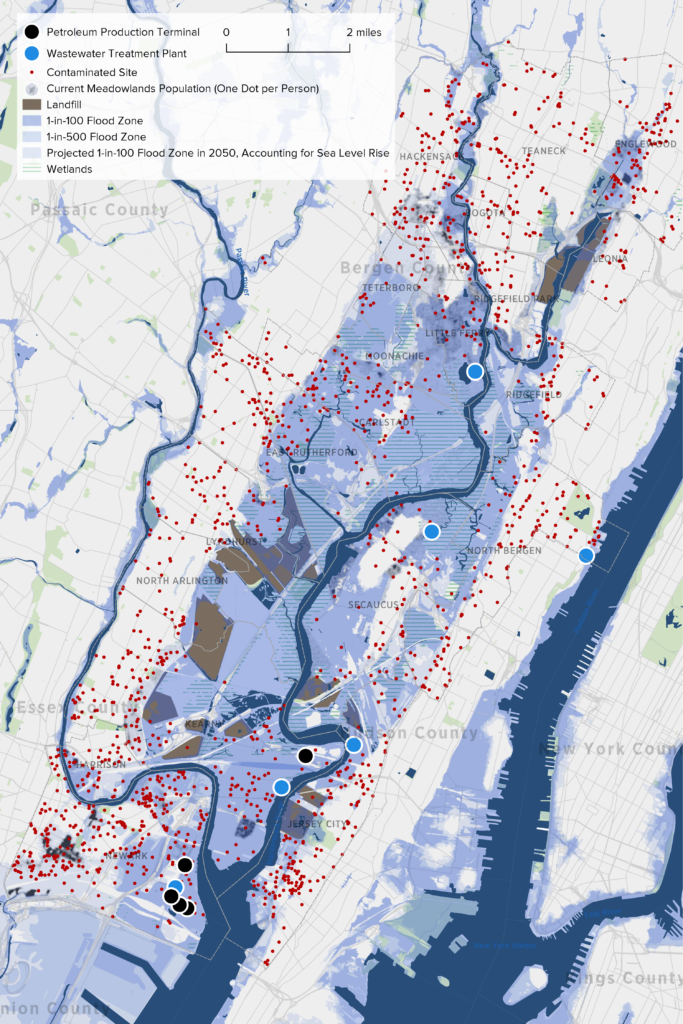Meadowlands, we have a problem.
As our region warily watches what is already proving to be a hurricane season for the record books, one of the more alarming stories emerging from the damaging impact of Hurricane Harvey in the Houston region is the consequences of flooding on a concentration of contaminated sites, chemical plants and wastewater treatment facilities. Immediately following the storm, a story emerged about 13 flooded Superfund sites. A recent follow-up has revealed a disturbing number of spills at some of these sites. Meanwhile, the New York Times had standing floodwaters tested in some of the hardest hit neighborhoods of Harvey and found alarming levels of dangerous E. coli, and heavy metals associated with untreated sewage.
The stories out of Houston should serve as a cautionary tale about how the accelerating effects of climate change, specifically increased flooding from more intense storms, heavier precipitation, rising seas and higher storm surges, present a very real threat to the public health and safety of our communities. During extreme events, floodwaters inundate contaminated sites and overwhelm facilities like treatment plants, dispersing dangerous contaminants into homes and businesses and throughout our natural systems.
Like the Houston region, ours is a hotbed of contaminated sites, treatment plants and chemical and petroleum facilities. We’ve made some good progress cleaning up contaminants over the years, but finishing this good and necessary work is now threatened by proposed draconian budget cuts at the federal level.
Perhaps the greatest concentration of these types of facilities and contaminated sites in our region is the New Jersey Meadowlands. The map below demonstrates just what is at stake from extreme storms. A 1 in 500 probability flooding event, like Harvey, would completely swamp the Meadowlands. That means floodwaters would inundate over 500 contaminated sites, six wastewater treatment plants, five petroleum production terminals and a handful of old landfills, potentially unleashing dangerous contaminants into the estuarine ecosystem and adjacent communities. It’s worth noting that even more frequent (1 in 100) flood events (e.g. a bad Nor’easter or a low category hurricane), still inundate many of the same sites, though to a lesser degree. As sea levels continue to rise, the frequency and depths – and thus the impact - of flooding will worsen. A storm in 2050, when there could be 2 additional feet of sea level rise, would flood over 800 contaminated sites. And at some point in the near future, many of these sites could be permanently under water.
If we are to heed the lessons from Houston, we will need to double down on efforts to clean up and secure these sites and facilities, for the safety and well-being of our human and natural communities. RPA will be proposing such solutions for the Meadowlands and places like it in our Fourth Regional Plan which will be released on November 30.

Map by Sarabrent McCoy, RPA.
